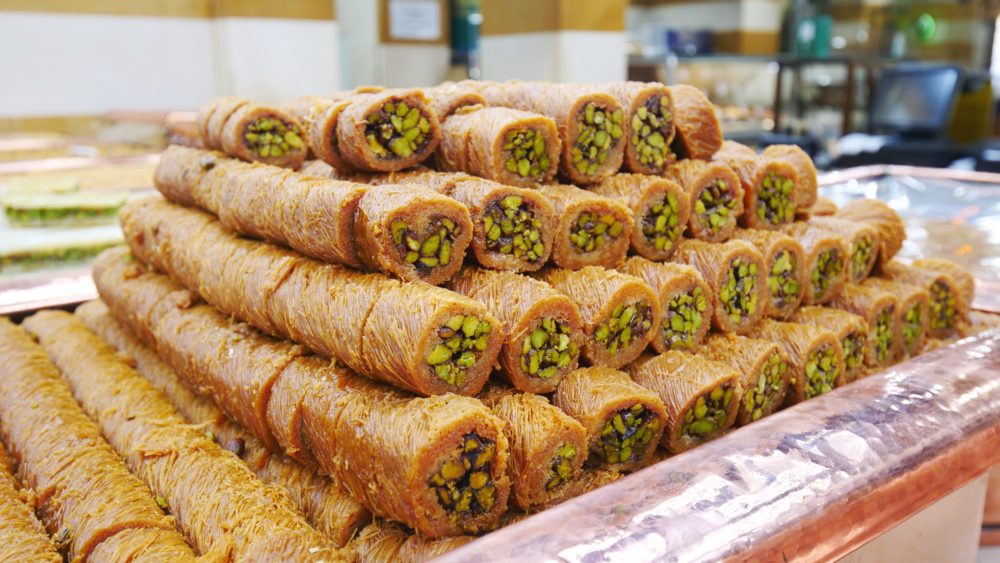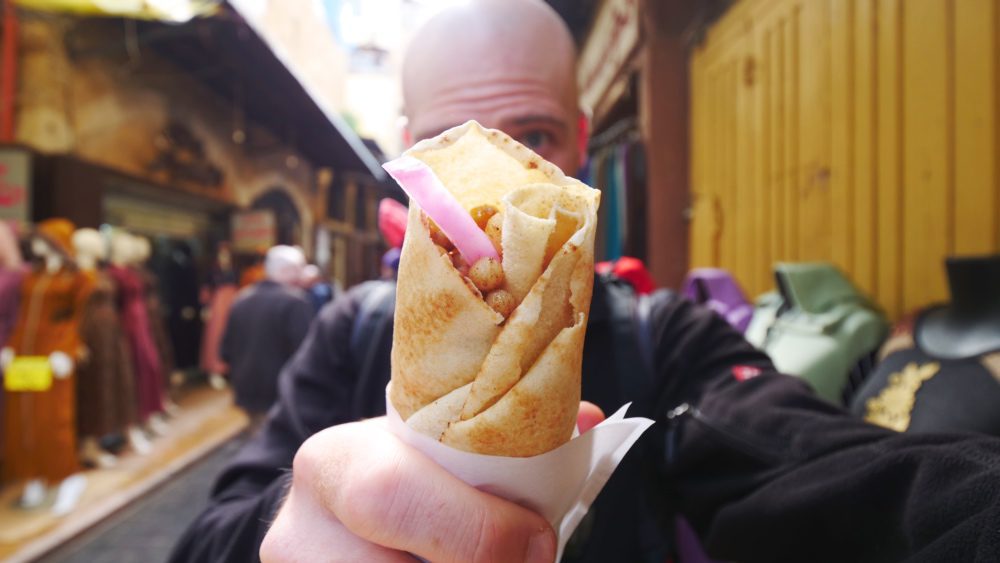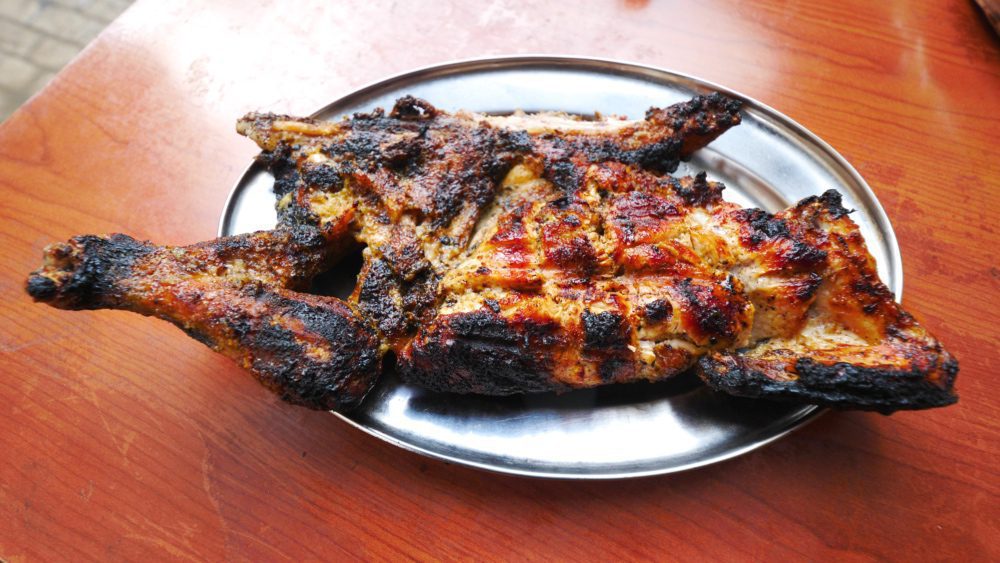With more adventures in Lebanon ahead of me, I finally made it to the city of Tripoli, where I’d be going all-out with food and sightseeing. Come with me as I enjoy some incredible Lebanese food in Tripoli, Lebanon!
Tripoli is the second-largest city in Lebanon after Beirut, as well as its northernmost city. It’s an ancient, coastal city whose roots go back to at least the 14th century BCE!

My friend and guide Nico and I started our adventure at the Palace of Sweets, a legendary shop that sells Lebanese sweets! It dates back to 1881 and is famous for their dishes made with ashta cream, including cakes, cookies, and ashta cream knafeh!
Everything looked so good, especially the knafeh! They invited into the back, where we saw it being made, along with lots of other sweets.

The halawet el jebn was made of thin dough filled with ashta cream, which is fried and soaked in sugar syrup. It was like a sweet, creamy egg roll!
Next, we got some pistachio mafroukeh, ashta cream knafeh, and maamoul. The pistachio mafroukeh with hot rose syrup was fluffy and creamy. I loved the fluffiness, crispiness, and decadence of the ashta cream knafeh.
The maamoul also contained ashta cream and was my favorite of the three. It was soft and crumbly, and the rose syrup took it to the next level.
Upstairs, we saw their beautiful cafe-like dining hall where you can buy more items, including chocolates and savory foods! Then, we went back into the kitchen to watch them make the halawet el jebn!
It’s hand-made out of a dough of semolina and cheese. Then, they coat it in sugar syrup!

From there, we drove five minutes to the Castle of Tripoli (a.k.a. The Citadel of Raymond Saint-Gilles) in the center of town. Below it on the street is a mini market with fruit and vegetable vendors. You have to climb uphill to get to the fortress!
It’s a beautiful Crusader fortress that dates back to before the 12th century. It was enlarged in 1103 but was completely destroyed before being rebuilt by the Ottomans. It has a moat and little windows where archers defended the fortress.
There are also white and black bricks around the entrance archway. It only cost us $0.50 each to enter. Inside, the citadel is massive. There are lots of buildings, a courtyard, and more.
There are so many levels with staircases leading up and down. I could see ruins of houses throughout the castle. There are windows looking out directly at the city, and on the roof, you can enjoy stunning views over all of Tripoli and the sea.

Next, we headed to the old souq, where you’ll find lots of shops with jewelry vendors, food vendors, spice sellers, and more. I tried a bit of za’atar and bought a big bag for my friends!
Then, we found a vendor selling moghrabieh, which is dough balls, chickpeas, and onions stir-fried together. Here, they put it in a rolled sandwich with pickled turnip. I loved the grainy dough balls and the pickled turnips! It cost 15,000 LL.
Then, at another stand, I got more za’atar from Syria and then a pickled chili from another stand. In their kitchen, I tried shanklish (cheese with lots of spices and olive oil). It was crumbly and so tasty!
Next were fruit, vegetable, and seafood vendors. I tried fresh strawberries before making it to the jewelry section. Then, we found and toured a hammam, or a Turkish bath!

After leaving the souq, we went to have some Tripoli kaak (15,000 LL), which is a bread with ackawi cheese, black olives, tomatoes, and peppers inside. It was smoky and crispy and a little doughy, like a thin bagel sandwich.
Finally, we drove to El Mina, a community next to the sea, to have some chicken at Kalasina Chicken. They grill it over charcoal! It’s so meaty and comes with a potent garlic sauce called tarator. It’s full of garlic flavor but can be overpowering if you eat too much of it!
Adding lemon and oil to the garlic sauce made it better! It cost us around $7 USD!
Counter
101 Countries • 1432 Cities